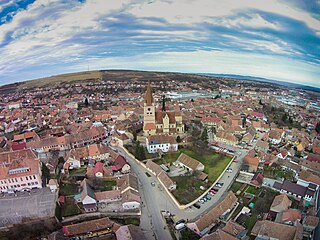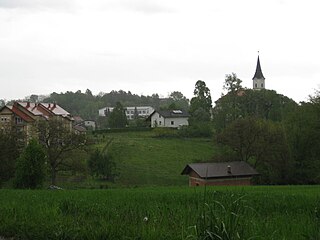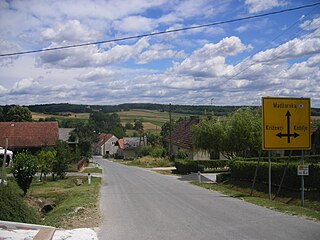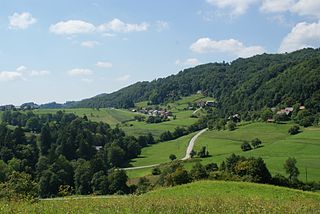| Domanjševci Domonkosfa | |
|---|---|
Saint Martin's Church | |
| Coordinates: 46°47′2.5″N16°17′15.33″E / 46.784028°N 16.2875917°E Coordinates: 46°47′2.5″N16°17′15.33″E / 46.784028°N 16.2875917°E | |
| Country | |
| Traditional region | Prekmurje |
| Statistical region | Mura |
| Municipality | Šalovci |
| Area | |
| • Total | 11.58 km2 (4.47 sq mi) |
| Elevation | 252.1 m (827.1 ft) |
| Population (2002) | |
| • Total | 301 |
| [1] | |
Domanjševci (pronounced [dɔˈmaːnʃɛu̯tsi] ; in older sources also Domanjšovci, [2] Hungarian : Domonkosfa [2] ) is a village in the Municipality of Šalovci in the Prekmurje region of Slovenia, right on the border with Hungary. [3]

Hungarian is a Finno-Ugric language spoken in Hungary and several neighbouring countries. It is the official language of Hungary and one of the 24 official languages of the European Union. Outside Hungary it is also spoken by communities of Hungarians in the countries that today make up Slovakia, western Ukraine (Subcarpathia), central and western Romania (Transylvania), northern Serbia (Vojvodina), northern Croatia, and northern Slovenia. It is also spoken by Hungarian diaspora communities worldwide, especially in North America and Israel. Like Finnish and Estonian, Hungarian belongs to the Uralic language family. With 13 million speakers, it is its largest member in terms of speakers.

A village is a clustered human settlement or community, larger than a hamlet but smaller than a town, with a population ranging from a few hundred to a few thousand. Though villages are often located in rural areas, the term urban village is also applied to certain urban neighborhoods. Villages are normally permanent, with fixed dwellings; however, transient villages can occur. Further, the dwellings of a village are fairly close to one another, not scattered broadly over the landscape, as a dispersed settlement.

A municipality is usually a single administrative division having corporate status and powers of self-government or jurisdiction as granted by national and regional laws to which it is subordinate. It is to be distinguished (usually) from the county, which may encompass rural territory or numerous small communities such as towns, villages and hamlets.
There are two churches in the settlement. The Roman Catholic church is built on a small hill southwest of the settlement in the middle of a small cemetery and is dedicated to Saint Martin. It is a single-nave brick building with a Romanesque portal dating to the 13th century. It was originally dedicated to Saint Wenceslas. The Lutheran church in the settlement was built in 1902 in a Neo-Romanesque style. Its designer was the architect Alojz Kleiber. [4]

A cemetery or graveyard is a place where the remains of dead people are buried or otherwise interred. The word cemetery implies that the land is specifically designated as a burial ground and originally applied to the Roman catacombs. The term graveyard is often used interchangeably with cemetery, but a graveyard primarily refers to a burial ground within a churchyard.

Saint Martin of Tours was the third bishop of Tours. He has become one of the most familiar and recognizable Christian saints in Western tradition.

The nave is the central part of a church, stretching from the main entrance or rear wall, to the transepts, or in a church without transepts, to the chancel. When a church contains side aisles, as in a basilica-type building, the strict definition of the term "nave" is restricted to the central aisle. In a broader, more colloquial sense, the nave includes all areas available for the lay worshippers, including the side-aisles and transepts. Either way, the nave is distinct from the area reserved for the choir and clergy.
The poet, writer, and teacher István Szijjártó lived and died in the village.
István Szijjártó was a Slovene Lutheran teacher and poet in Hungary.

















